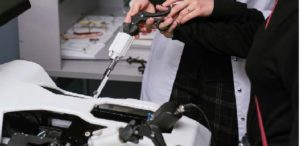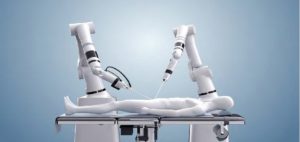
By Dr S Sudhindran, Chief Transplant Surgeon, Department of GastrointestinalSurgery and Solid Organ Transplantation, Amrita Institute of Medical Sciences, Kochi
Liver transplantation is the only treatment option for patients suffering with acute or chronic liver failure. If you look at patients with kidney failure, an alternate option of dialysis is available but there is no substitute to maintain a failing liver for lengthy periods. They need a new liver.
A liver transplant is not a simple procedure, but it is a lifesaving intervention. In the last couple of years, survival rates after liver transplant have improved remarkably. Currently, over 80-90 per cent of people survive liver transplantation and enjoys a good quality-of-life. The survival rate is comparable with international standards. There are two primary options for liver donation. The first one is from a deceased donor where liver donation is from a patient who has undergone brain death. This form of donation is less common as we in India are already dealing with the lack of donated organs.
The other form of donation is living donor transplant where the donation of part of the liver is from another person, mostly family or relative. This form of donation is popular because of the fact that the donor’s body needs only about a third of the liver’s volume for its daily function and the liver’s unique ability to regenerate. After transplantation, the partial livers of both the donor and recipient will grow and remodel to form complete organs, usually within three months.
Risks with donor surgery
Liver donor surgery is the most challenging surgery one can do because you are operating on a healthy individual with no morbidity and you want to make sure that no harm comes to the donor. However, as in all surgeries, there are risks involved with the donor surgery too. These risk may be bleeding, infection, bile leakage from the cut surface of the liver and possible death. So we as surgeons need to minimise these risks. In addition, the probability of these risks occurring is more when the right lobe of the liver (comprising up to 60 per cent of total liver volume) is used for donation. When the recipient is a small adult, the left lobe of the liver from the donor might suffice and in such cases the complication rates are extremely low. For transplantation into children, even a smaller portion of the liver is required from the donor, diminishing the complication even further, although not totally limiting them.
We did a study to look at these risk factors. The occurrence of morbidity and mortality after living donor liver transplantation is much talked about but potentially life-threatening near miss events (during which a donor’s life may be in danger but after which there are no long-term sequelae) are rarely reported. Our study revealed that most complications are of low-grade severity but 4.1 per cent of patients had severe or life-threatening events. That’s why we look for better options so that we can improve the experience for the live liver donors.
Robotic liver transplant
Robotic liver transplant in India is done for the live donor. In the recent past, minimally invasive surgery has gained popularity for donor liver surgery. The resection of anterior liver segments and left lateral secterectomies through laproscopic approach is well established.
The advantages of this method are less estimated blood loss, postoperative pain, morbidity and shorter hospital stay. And yet this technique has its limitations. When the robotic surgery arena developed we looked at converting from key hole to robotic surgery. In fact, pure robotic donor right hepatectomy (liver surgery) is performed only by a handful of centres around the world.
We are doing robotic right donor hepatectomies at our centre for the last two years. In June, 2018 we did our first successful case. In India, there are about two-three centres that are doing robotic hepatectomy. Dr Rela’s Institute is one of them and they do a large number of paediatric cases. Another centre that is doing good work in this field is the Medanta Hospital.
At our centre we have done more than 850 liver transplants. Of the total of 850 transplants, 780 were from live donors and 70 were from deceased donors. In fact we were the first and largest liver transplant programme in Kerala and maybe India. We have been running a regular live donor programme since 2007 and we performed our first liver transplant in June 27, 2004. Currently, in a year, the team performs 103 liver transplants. We have the largest robotic donor hepatectomy experience in India and maybe in the world with a total of 150 successful cases.
In our experience, with an experienced team pure robotic right donor hepatectomy is safe and feasible for a select group of patients. This operative video demonstrating surgical technique as follows–Right lobe mobilisation, Defining Right hepatic vein and IVC, Hilar dissection, Marking the demarcation line, Parenchymal transection using robotic instruments, assistant port is used for minimal usage of CUSA/ suction, robotic suture closure of bile duct opening, Hemolocks and stapplers for final vascular transection, delivering graft through pfannensteil incision.
Establishing robotic surgery programme
The basic requirement to start a successful robotic liver surgery programme is a dedicated team along with equipment and surgical expertise. You need a patient and supportive management because the equipment is a big investment. The initial cases are subsidised an require a lot of support from the team, from anaesthetist, nursing staff and assistants. We have a team of about 13 senior consultants, four to five nurses and technicians and we have managed to develop a world class liver transplant programme.
Challenges and learnings
Robotic surgery is very different from open surgery techniques, because in open technique we rely a lot on our senses, like depth perception and feel of the tissue, whereabouts and location and moving the organs is easier in open surgery. Seeing things in real and observing things on a screen is completely different, even if it’s a 3D rendertion. Robotic surgery has its limitations related to these and even a little bit of bleeding is difficult to manage though the robotic arms. Besides, there is always a tendency to convert from robotic to open if complications arise. One other challenge is that robotic surgery takes a longer time. The open surgeries take about six hours to complete but robotic surgery may take anywhere from 10-12 hours.
The learning curve is steep, we are still establishing and changing protocols. One thing that is challenging is when we take the liver out of the donor, due to lack of blood and oxygen it starts to decay. We can slow this process by flushing the organ with a special liquid and cooling it before it goes to the bench. This step is extremely important and time taken to do this should be minimal. In open surgery, we hardly take two-five minutes to process and put it in ice, but in robotic surgery, it takes about 15-20 minutes. So we need to hurry slowly. In addition, when you change instruments in open surgery or laparoscopic surgery it is easier, but in robotics, there is a longer process. You cannot just put down one clamp; you need to unlock, decamp, check, so instrument exchange takes time.
Additionally, the liver bleeds easily so we need to do a lot of very precise fine stitching, this requires a lot of experience as both donor and recipient blood vessels need to be preserved.
Here robotics comes in handy as robotics provides good dexterity and magnification for this precise stitching. However, this requires a lot of training and the amalgamation of these techniques; open, laparoscopic and robotics would be the best thing for the patient but very difficult to achieve for the surgeon.
In terms of instrument improvement, the present robotic system, the DaVinci system, developed in America was not developed for liver transplant surgery. Its main use was for urology and gynaecology procedures. The device needs a lot of upgrades and has to develop more for liver surgery. We hope this will happen soon as other companies come into the market. One of the important steps in liver transplant is liver resection or parenchymal transection or measuring and division of the liver for resection.
Currently, the main device used for parenchymal transection is Cavitron Ultrasonic Surgical Aspirator (CUSA). There is no instrument for this in PULSE robotics so an operating surgeon has to be there to do it. In fact, the robotic equivalent of CUSA is eagerly awaited, as it will help improve the division of the liver and the liver transplant donor surgery in future.
In future
The main disadvantage of robotic liver surgery is its cost.In our experience, robotic liver resections cost on an average 2.5 lakhs extra than open surgery which itself costs about 18-20 lakh. We hope that with the development of newer techniques and more competition in the market cost rationalisation will happen. I hope that in the near future, robotic liver surgeries will become safer and feasible. Of course, this will depend on how the technology evolves. My wish list would be for better miniaturisation, development of better instruments, easy and faster docking and de docking, enhanced navigation use of AI, cost effectiveness to make this more affordable.






